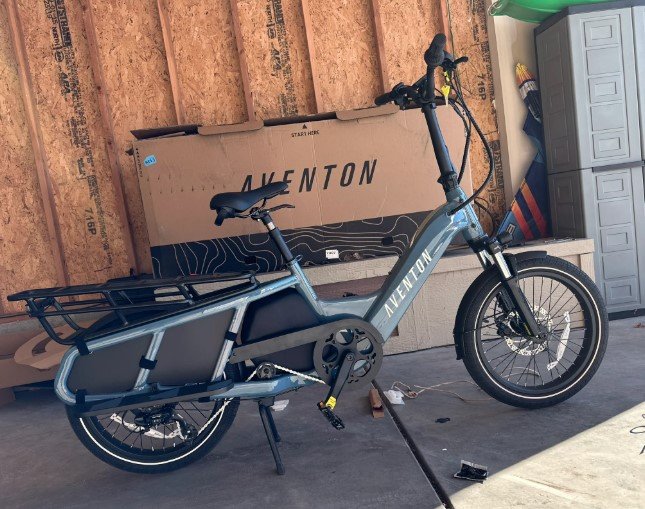Palo Alto-based company Also, a spin-off from electric vehicle maker Rivian, unveiled its innovative TM-B two-wheeled Software Defined Vehicle on October 22, 2025, in San Francisco. This launch marks a bold step in micromobility, blending advanced software with electric bike design to redefine urban transport and challenge traditional cycling norms.
What Makes the TM-B Stand Out
The TM-B is not just an e-bike; it represents a shift toward software-defined vehicles in the two-wheeled space. Backed by $300 million in funding, Also aims to create efficient, fun modes of transport that encourage people to ditch cars for shorter trips.
At the heart of the TM-B is its pedal-by-wire system, which eliminates mechanical chains and uses software to control power delivery. This setup provides instant torque and regenerative braking, making rides smoother and more responsive.
Riders can expect up to 100 miles of range on a single charge, a top assisted speed of 28 mph, and 180 Nm of torque. These specs position the TM-B as a versatile option for city commuting, capable of handling hills and traffic with ease.

The bike also features a modular design, allowing users to swap top frames for different needs, like cargo carrying or passenger seats. Integrated security includes proximity key unlocking and GPS tracking, adding peace of mind in urban settings.
Key Features and Innovations
One standout element is the DreamRide system, which personalizes the riding experience through software updates. Over time, the bike learns from user habits to improve efficiency and comfort.
The TM-B includes a center display for navigation, battery status, and ride modes, similar to dashboards in modern electric cars. Fast charging via USB-C means less downtime, appealing to busy commuters.
Here are some core innovations:
- Modular frame swaps for quick customization.
- Regenerative braking that recharges the battery during descents.
- Built-in generator for extended range without plugging in.
- Software updates that enhance performance post-purchase.
Pricing starts at around $4,000, which positions it as a premium yet accessible choice in the growing e-bike market. Early reviews highlight its ability to out-accelerate cars at intersections, blending bike agility with vehicle power.
Background on Also and Rivian Connection
Also emerged as a Rivian spin-off to focus on smaller electric vehicles, led by President Chris Yu and supported by Rivian CEO RJ Scaringe. The company draws from Rivian’s expertise in electric trucks and SUVs to innovate in micromobility.
This launch follows Rivian’s success in the EV space, where software-defined features have set new standards. Also extends that approach to two wheels, aiming to reduce urban congestion and emissions.
In recent years, the micromobility sector has boomed, with global e-bike sales reaching over 40 million units in 2024, according to industry reports. Also enters this market at a time when cities like San Francisco are expanding bike lanes and promoting green transport.
The TM-B’s development involved years of research, incorporating feedback from urban riders to address real-world challenges like theft and battery life.
Impact on New Mobility Trends
The TM-B could accelerate the shift toward sustainable urban transport, especially in crowded cities. By offering car-like tech in a bike form, it appeals to those hesitant about traditional cycling.
Experts predict this launch will influence competitors, pushing more innovation in software integration for bikes. With partnerships like one with Amazon for cargo versions, Also targets delivery services, potentially cutting last-mile emissions.
Consider these potential impacts:
| Aspect | Current Challenge | TM-B Solution | Expected Benefit |
|---|---|---|---|
| Urban Congestion | Heavy traffic from cars | Agile two-wheeled design | Faster commutes, less road use |
| Environmental Footprint | High emissions from vehicles | Electric power with regen | Lower carbon output per trip |
| User Adoption | Complex bike maintenance | Software updates and modularity | Easier ownership, longer lifespan |
| Cost Efficiency | Fuel and parking expenses | Affordable electric charging | Savings on daily transport |
This table shows how the TM-B addresses key pain points, based on mobility trends from 2025 reports.
As cities invest in infrastructure, such as San Francisco’s recent expansion of autonomous vehicle zones, products like the TM-B fit into a broader ecosystem of smart mobility.
Reactions from the launch event suggest strong interest, with attendees noting its rugged motorcycle-inspired look and seamless tech integration.
Challenges and Future Outlook
While promising, the TM-B faces hurdles like regulatory approvals for software-defined features in various regions. Safety concerns in mixed traffic remain, though built-in sensors help mitigate risks.
Looking ahead, Also plans to expand its lineup, including quadricycles for delivery. This could catalyze global adoption, especially in Europe and Asia where e-bikes are already popular.
In 2025, with EV adoption rising 25 percent year-over-year, Also’s timing aligns with a push for efficient transport amid climate goals.
The company emphasizes over-the-air updates to keep vehicles evolving, much like smartphones, ensuring long-term value.
Share your thoughts on the TM-B in the comments below. Did this launch excite you about the future of urban mobility? If you found this article helpful, please share it with friends who love tech and green transport.








